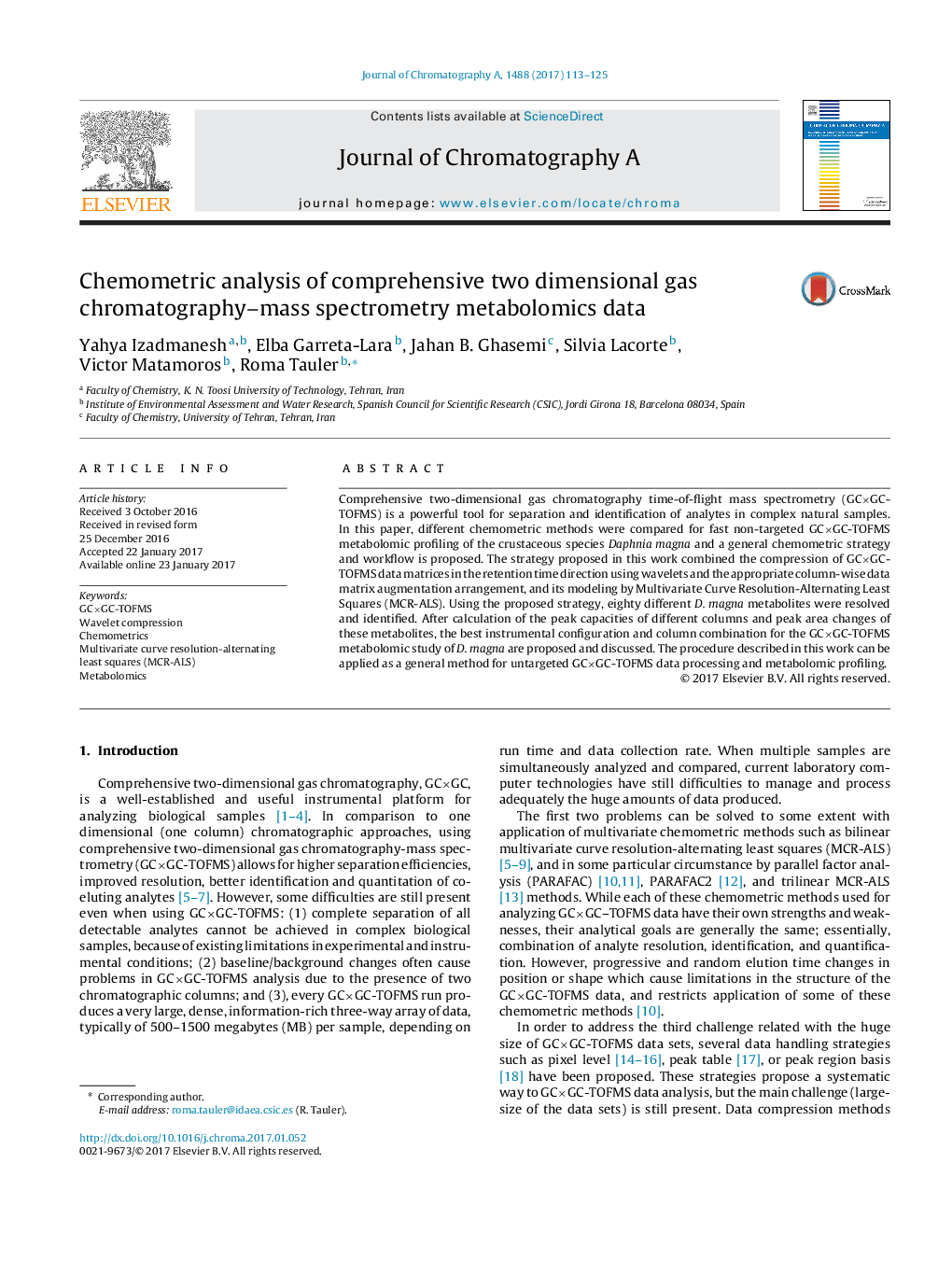| Article ID | Journal | Published Year | Pages | File Type |
|---|---|---|---|---|
| 5135527 | Journal of Chromatography A | 2017 | 13 Pages |
â¢A chemometric workflow is used for metabolomic analysis by GCÃGC-MS.â¢The trilinearity of the GCÃGC-MS data is tested.â¢Evaluation of performance of bilinear and trilinear chemometric methods are made..â¢The workflow is used for metabolomic profiling of Daphnia Magna.â¢The best chromatographic configuration for future metabolomic work is proposed.
Comprehensive two-dimensional gas chromatography time-of-flight mass spectrometry (GCÃGC-TOFMS) is a powerful tool for separation and identification of analytes in complex natural samples. In this paper, different chemometric methods were compared for fast non-targeted GCÃGC-TOFMS metabolomic profiling of the crustaceous species Daphnia magna and a general chemometric strategy and workflow is proposed. The strategy proposed in this work combined the compression of GCÃGC-TOFMS data matrices in the retention time direction using wavelets and the appropriate column-wise data matrix augmentation arrangement, and its modeling by Multivariate Curve Resolution-Alternating Least Squares (MCR-ALS). Using the proposed strategy, eighty different D. magna metabolites were resolved and identified. After calculation of the peak capacities of different columns and peak area changes of these metabolites, the best instrumental configuration and column combination for the GCÃGC-TOFMS metabolomic study of D. magna are proposed and discussed. The procedure described in this work can be applied as a general method for untargeted GCÃGC-TOFMS data processing and metabolomic profiling.
